In the modern world, headphones have taken on their place as a necessity. Whether used by music lovers seeking an active audio experience or busy business professionals for open communication, headphones are important for delivering high-quality audio.
The exceptional sound output is made possible by complex components that work well to deliver the necessary sonic brilliance. In this comprehensive guide, we’ll delve into the world of headphone parts and pinpoint the crucial components responsible for creating great sound.
Introduction to Headphone Parts
We enjoy the audio quality that a number of components create in headphones, often known as earphones or headsets. Engineers carefully design and engineer these parts to produce excellent sound quality in a range of applications, including speaking and music playing
Those looking for the best headphones and audiophiles interested in the finer details of sound creation must understand the roles and interactions of headphone parts.
1. Drivers
These drivers are the brains of every pair of headphones. These are the elements in charge of transforming electrical signals into audible sound waves. A magnet assembly, voice coil, and diaphragm make up a driver.
The diaphragm vibrates when an electrical current flows through the voice coil and interacts with the magnet assembly’s magnetic field. Our ears receive the sound waves produced by these vibrations as they move through the atmosphere.
In headphones, there are primarily two different driver types:
Dynamic Drivers:
The majority of headphones use this kind of driver. They can produce both detailed highs and profound bass over a wide frequency range.
Balanced Armature Drivers:
Compared to dynamic drivers, these drivers are more compact and effective. They are frequently found in high-end earphones and in-ear monitors (IEMs). It is possible to precisely tune the sound by combining different balanced armature drivers to span various frequency ranges.
2. Enclosures
The earcups or enclosures of headphones are extremely important in influencing the sound. They contain the drivers and control the direction of the sound waves as they enter the listener’s ears. Open-back, closed-back, and semi-open enclosures all have different acoustic properties.
Open-Back Enclosures:
These have earcups with perforations that let noise and air pass through. They provide an increased, natural-looking soundstage, but they also lose noise, making them less effective in busy settings.
Closed-Back Enclosures:
The earcups on these are sealed, isolating the listener from background noise and preventing sound leakage. Although their soundstage may be a little bit smaller, they frequently produce greater bass response.
Semi-Open Enclosures:
These present a compromise between open-back and closed-back designs, as their name implies. They strike a balance between isolation and soundstage.
3 Cables:
One important part of headphone parts is cable.Headphone wires link the drivers to the audio source. Although cables may appear like a simple part, they can significantly affect both the durability and sound quality.
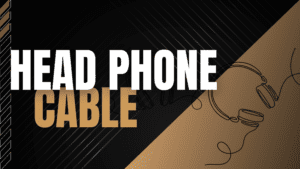
Cable Materials:
All high-quality cables are made of oxygen-free copper (OFC) or copper that has been silver-plated. Better conductivity provided by these materials lowers signal loss and noise.
Cable Length and Thickness:
Signal strength is influenced by cable length, and thicker cables frequently have lower resistance. But for portable headphones, overly thick cords might become a hassle.
Detachable Cables:
Some headphones have flexible cables, allow users to switch between different cable types for various uses or repair them if they get damaged.
4. Headband and Ear Cushions
The headband and ear cushions help make headphones more comfortable and well-fitting. Additionally, they help isolate outside noise and guarantee a consistent listening experience.
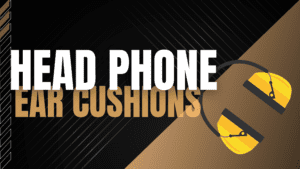
Headband:
The headphones’ weight is dispersed by the headband, which also maintains them firmly in place on the head. For different sized heads, there are adjustable headbands.
Ear Cushions:
Normally, materials like foam, leather, or fake leather are used to create these. They give the ears a cozy seal that isolates outside noises and improves bass response.
5. Connectors
The connection points between the audio source and the headphones are called connectors. They come in many shapes and sizes, each with a different function.
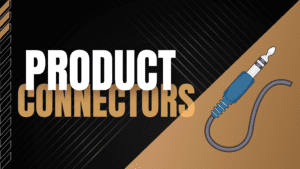
3.5mm Jack:
This connector, which is frequently used for headphones and is usable with most portable devices, is also known as a mini-jack or an aux jack.
1/4-inch Jack:
In professional audio equipment, this bigger connector—also known as a quarter-inch or stereo jack—is frequently used.
USB and Lightning Connectors:
For better audio quality and connectivity with digital devices, some headphones incorporate digital connections like USB or Lightning.
6. Microphones and Controls
Modern headphones frequently have controllers and microphones for interacting with devices and communicating.
Microphones:
Sound instructions and hands-free calls are made possible by built-in microphones. They are important to communication-focused headphones and gaming headsets in particular.
Inline Controls:
Users can adjust the volume, play/pause music, skip tracks, and answer calls without touching their smartphones by using the buttons or switches on the headphone wire.
7. Sound Enhancement Technologies
To enhance audio quality and the user experience, headphones use a number of sound increase technologies.
Active Noise Cancellation (ANC):
A better listening experience is created via ANC technology, which use microphones to detect outside noise and emit inverse sound waves to cancel it out.
Digital Signal Processing (DSP):
Real-time audio signal control with DSP makes it possible to create unique sound profiles and effects.

Bluetooth and Wireless Connectivity:
Without the use of cables, wireless headphones connect to devices using Bluetooth technology. For better audio quality, certain models also include a variety of cutting-edge technologies.
8 foldable swivel ear cup:
Normally speaking, a foldable swivel ear cup refers to a characteristic included in headphones, particularly those made to be portable and simple to store. Let me list the parts in order:
Foldable:
take it another way, the headphones are made to be folded or collapsed into a smaller form factor. This is very helpful for simple storage and transportation. People who wish to carry their headphones without taking up too much room in their bags or wallets frequently select
foldable headphones.
Swivel Ear Cup:
The ear cups are the parts of the headphones that rest on or cover your ears. Swivel describes the range of motion or rotation of these ear cups. This can accomplish a variety of objectives, including as making it easier to adjust the ear cup angles for better comfort and audio quality. When folded, it can make it possible for the headphones to lie flat.
We have combined these characteristics in a foldable swivel ear cup design for headphones to improve storage convenience and provide a comfortable fit with increased flexibility for various head shapes and sizes
It’s necessary to assess elements like sound quality, comfort, build quality, wireless connectivity (if applicable), and any additional features that could be significant to you, such active noise cancellation or built-in microphones, when thinking about headphones with foldable swivel ear cups. Before making a purchase, always read reviews and, if feasible, test the headphones to make sure they fit your requirements.
9 various buttons use as headphone parts
various buttons use as headphone parts
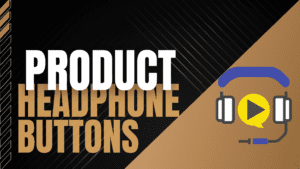
Power/Pairing Button:
Press and hold:
Turn the headphones on or off.
Press and hold for an extended time:
Initiate the pairing mode to connect the headphones to a new device via Bluetooth.
Play/Pause Button:
Press: Play or pause audio playback.
Next/Previous Track Buttons:
Press: Skip to the next track (Next button) or go to the previous track (Previous button).
Volume Up/Down Buttons:
Press: Increase (Volume Up button) or decrease (Volume Down button) the audio volume.
Call Management Button:
Press to take a new call or end a present one.
Hold down the button to decline an incoming call.
Voice Assistant Button:
Press: Activate the voice assistant on your connected device (e.g., Siri, Google Assistant).
Noise Cancellation/Ambient Sound Button:
Press: Select between the noise cancellation modes, or turn on ambient sound mode to bring outside sounds into the headset so you can hear what’s going on.
EQ/Customization Button:
Press to switch between various audio profiles or equalizer settings.
LED Indicator Light:
The LED light might indicate various states such as power on/off, pairing mode, low battery, or connection status.
Charging Port/Button:
On wireless headphones, a port or button for charging the device might be present.
Touch Controls (on some models):
Touch-sensitive controls are available on the ear cups of some headphones. Scrolling up or down to change the volume, tapping to play or pause, or left or right to move between tracks are examples of common motions.
The Heart of the Beat: Sufficient Bass
Many kinds of music are built around the bass, which adds depth, rhythm, and a visceral connection to the sound. In order to get a good bass response in headphones, you need a mix of engineering, design, and high-quality headphone parts .
Drivers:
The majority in charge of transforming electrical information into sound waves are headphones drivers. Larger speakers with powerful magnets are better able to reproduce lower frequencies, giving the experience of deep bass.
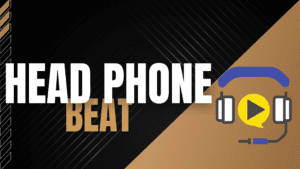
Diaphragm Material:
When trying to replicate bass, the diaphragm, the part of the driver that moves to produce sound, is crucial. For more precise bass performance, stiffer diaphragms comprised of composite metals or premium plastics can offer controlled movement.
Enclosure Design:
Bass tones resonate variably depending on the enclosure, or physical design, of the headphones. Due to the limited sound waves’ ability to reflect back into the ear, closed-back headphones typically create more powerful bass.
Acoustic Isolation:
This eliminates noise so that listeners may fully enjoy the subtleties of bottom frequencies.
Precision in Sound:
This representation of Audio with Accuracy
While the bass is an essential component, a complete listening experience also requires precise sound reproduction over the whole frequency band.
Frequency Response:
A headphone’s frequency response graph shows how it reacts to various frequencies. Without highlighting or decreasing any particular frequency range, a headphone with a flat frequency response accurately reproduces sound.
Crossover Network (for Multiple Drivers):
High-end headphones frequently use multiple drivers, with each driver responsible for a separate frequency band. A well-designed crossover network ensures a smooth transition between the bass, midrange, and treble by sending the proper frequencies to the right driver.
Driver Matching:
It’s important to keep the sound the same in both ears when using headphones with dual drivers. To prevent any imbalances, precise driver matching ensures that the left and right channels transmit the same audio.
Damping Materials:
We have carefully placed these components inside the ear cups to block out undesired resonances that can alter the sound. These components aid in producing audio output that is cleaner and more clear.
Quality Amplification:
Only a part of the headphones themselves, a good headphone amplifier can have a big impact on audio quality. The entire sound potential of the headphones is ensured by amplifiers capable of driving them adequately
Balancing Act:
Bass & Accuracy at a Crossroads
It can be difficult to find headphones that strike the balance between good bass good bass and engaged best headphone parts and accurate sound reproduction. Manufacturers constantly modify designs and materials, add cutting-edge technological innovations, and strike this delicate equilibrium.
In the end, personal preference and intended use determine the ideal headphone. Audiophiles looking for precise studio monitoring may place more value on devices with flat frequency responses than on versions with pronounced low-end levels for bass fans.
